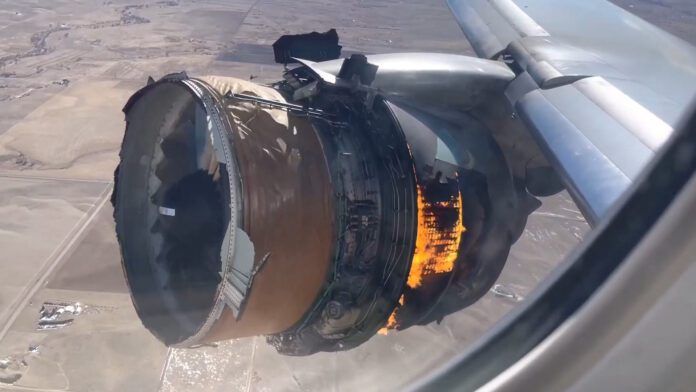The FAA has approved United Airlines’ plan to start flying 52 Boeing 777s that were grounded after an engine failure in Denver more than a year ago. The wide-bodies represent about 10 percent of the seats available by the airline so as schedules return to normal they were being missed. The aircraft will start on domestic routes initially, heading to Hawaii and back on long-haul routes by mid-June. United was the only U.S. customer to buy 777s with Pratt & Whitney PW4000-112 engines.
The engine on the incident aircraft lost two fan blades during the climbout from Denver to Honolulu in February of 2021. Parts of the cowling fell in a residential area of the suburb of Broomfield but no one was hurt. Although damage to the nacelle was extensive, it was not an uncontained failure. The containment ring in the engine held the damaged parts. The NTSB is still investigating the mishap and will look at why the cowling came apart.




































Awesome title/photo combination 🙂
So what was the fix?
Yes, what was the fix, the article left us wondering.
To the above, for further reading, see FR Doc Nos: 2022-05296, 022-05295, 022-05309
FAA is requiring ultrasound and TAI inspection of fan blades in some variants of PW4000 engines, modification of engine inlets to withstand fan blade separation, installation of debris shields on thrust reverser inner walls, inspection of the fan cowl doors for moisture ingress, and checks of the response of the hydraulic pump shutoff valves to engine fire handle input.
There may be more, that’s just what I found in a minute or so of searching via the terms 777-200 and PW4077. A redesign of the fan blade would be necessary to correct this LCF issue, and what I don’t know is whether it makes more economic sense to PW or their customers to design and deploy new blades vs the alternative of going through existing part stores as necessary when blades fail the requisite inspections, while developing new service limits based on the service lives of the blades which do fail inspection. That would depend on the remaining lifespan of these engines and whether they’re being actively manufactured and sold or just maintained for a shrinking fleet of aircraft which are equipped with them. The design changes necessary are only part of the process, you have to design and test the manufacturing process of the new blades, do destructive testing of the new blades, certify the new blades, and finally phase out the old blades, which may involve scrapping millions of dollars worth of inventory.